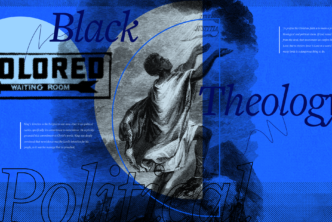C. S. Lewis books are beloved by many—he is undoubtedly one of the most-read Christian writers of the twentieth century. Some of the more familiar are Mere Christianity, Out of the Silent Planet, The Great Divorce, and The Screwtape Letters.
Keep reading to explore three excerpts from a few other C. S. Lewis books, plus information on three of Lewis’ lesser-known works that reveal corners of his writing career many may not be purvey to and critiques of four of his scholarly works.
Miracles
In science we have been reading only the notes to a poem; in Christianity we find the poem itself. — C. S. Lewis
This is one of many memorable lines in the crescendo of C. S. Lewis’ Miracles. The book refutes popular arguments against the supernatural, ending with a stirring reflection, excerpted below, of what he calls the Grand Miracle: the Incarnation.
***
Only a Man who did not need to have been a Man at all unless He had chosen, only one who served in our sad regiment as a volunteer, yet also only one who was perfectly a Man, could perform this perfect dying; and thus (which way you put it is unimportant) either defeat death or redeem it. He tasted death on behalf of all others. He is the representative ‘Die-er’ of the universe: and for that very reason the Resurrection and the Life. Or conversely, because He truly lives, He truly dies, for that is the very pattern of reality. Because the higher can descend into the lower He who from all eternity has been incessantly plunging Himself in the blessed death of self-surrender to the Father can also most fully descend into the horrible and (for us) involuntary death of the body. Because Vicariousness is the very idiom of the reality He has created, His death can become ours. The whole Miracle, far from denying what we already know of reality, writes the comment which makes that crabbed text plain: or rather, proves itself to be the text on which Nature was only the commentary. In science we have been reading only the notes to a poem; in Christianity we find the poem itself.
With this our sketch of the Grand Miracle may end. Its credibility does not lie in Obviousness. Pessimism, Optimism, Pantheism, Materialism, all have this ‘obvious’ attraction. Each is confirmed at the first glance by multitudes of facts: later on, each meets insuperable obstacles. The doctrine of the Incarnation works into our minds quite differently. It digs beneath the surface, works through the rest of our knowledge by unexpected channels, harmonizes best with our deepest apprehensions and our “second thoughts,” and in union with these undermines our superficial opinions. It has little to say to the man who is still certain that everything is going to the dogs, or that everything is getting better and better, or that everything is God, or that everything is electricity. Its hour comes when these wholesale creeds have begun to fail us.
Whether the thing really happened is a historical question. But when you turn to history, you will not demand for it that kind and degree of evidence which you would rightly demand for something intrinsically improbable; only that kind and degree which you demand for something which, if accepted, illuminates and orders all other phenomena, explains both our laughter and our logic, our fear of the dead and our knowledge that it is somehow good to die, and which at one stroke covers what multitudes of separate theories will hardly cover for us if this is rejected.
God in the Dock
In this excerpt about miracles in the Bible from God in the Dock, Lewis explains why belief in miracles can’t be dismissed as a vestige of an antiquated worldview. It has been lightly edited for length.
I have known only one person in my life who claimed to have seen a ghost. It was a woman; and the interesting thing is that she disbelieved in the immortality of the soul before seeing the ghost and still disbelieves after having seen it. She thinks it was a hallucination.
1. Seeing is not believing
In other words, seeing is not believing. This is the first thing to get clear in talking about miracles. Whatever experiences we may have, we shall not regard them as miraculous if we already hold a philosophy which excludes the supernatural. . . . We can always say we have been the victims of an illusion; if we disbelieve in the supernatural this is what we always shall say. Hence, whether miracles have really ceased or not, they would certainly appear to cease in Western Europe as materialism became the popular creed. For let us make no mistake. If the end of the world appeared in all the literal trappings of the Apocalypse, if the modern materialist saw with his own eyes the heavens rolled up and the great white throne appearing, if he had the sensation of being himself hurled into the Lake of Fire, he would continue forever, in that lake itself, to regard his experience as an illusion and to find the explanation of it in psycho-analysis, or cerebral pathology. Experience by itself proves nothing. If a man doubts whether he is dreaming or waking, no experiment can solve his doubt, since every experiment may itself be part of the dream. . . .
2. Everyone has preconceptions
This fact, that the interpretation of experiences depends on preconceptions, is often used as an argument against miracles. It is said that our ancestors, taking the supernatural for granted and greedy of wonders, read the miraculous into events that were really not miracles. And in a sense I grant it. That is to say, I think that just as our preconceptions would prevent us from apprehending miracles if they really occurred, so their preconceptions would lead them to imagine miracles even if they did not occur.
3. Ancient people believed in the laws of nature, too
. . . But there is one thing often said about our ancestors which we must not say. We must not say ‘They believed in miracles because they did not know the Laws of Nature.’ This is nonsense. When St Joseph discovered that his bride was pregnant, he was ‘minded to put her away’. He knew enough biology for that. Otherwise, of course he would not have regarded pregnancy as a proof of infidelity. When he accepted the Christian explanation, he regarded it as a miracle precisely because he knew enough of the Laws of Nature to know that this was a suspension of them. When the disciples saw Christ walking on the water they were frightened: they would not have been frightened unless they had known the laws of Nature and known that this was an exception. If a man had no conception of a regular order in Nature, then of course he could not notice departures from that order: just as a dunce who does not understand the normal metre of a poem is also unconscious of the poet’s variations from it. Nothing is wonderful except the abnormal and nothing is abnormal until we have grasped the norm. Complete ignorance of the laws of Nature would preclude the perception of the miraculous just as rigidly as complete disbelief in the supernatural precludes it, perhaps even more so. For while the materialist would have at least to explain miracles away, the man wholly ignorant of Nature would simply not notice them.
“To Sarah Neylan” from The Collected Letters of C. S. Lewis.
Below is a tender letter (trimmed for length) from Lewis to his goddaughter Sarah Neylan, shortly before her confirmation, from The Collected Letters of C. S. Lewis. The letter reflects on the role of feelings in Christian devotion before ending with a brief word on duty.
3/4/49
My dear Sarah
[…]
I think of myself as having to be two people for you. (1. The real, serious, Christian godfather (2) the fairy godfather. [. . .]
As for No 1, the serious Christian godfather, I feel very unfit for the work—just as you, I dare say, may feel very unfit for being confirmed and for receiving the Holy Communion. But then an angel would not be really fit and we must all do the best we can. So I suppose I must try to give you advice. And the bit of advice that comes into my head is this: don’t expect (I mean, don’t count on and don’t demand) that when you are confirmed, or when you make your first Communion, you will have all the feelings you would like to have. You may, of course: but also you may not. But don’t worry if you don’t get them. They aren’t what matter. The things that are happening to you are quite real things whether you feel as you wish or not, just as a meal will do a hungry person good even if he has a cold in the head which will rather spoil the taste. Our Lord will give us right feelings if He wishes—and then we must say Thank you. If He doesn’t, then we must say to ourselves (and Him) that He knows best.
This, by the way, is one of the very few subjects on which I feel I do know something. For years, after I had become a regular communicant I can’t tell you how dull my feelings were and how my attention wandered at the most important moments. It is only in the last year or two that things have begun to come right—which just shows how important it is to keep on doing what you are told.
Oh—I’d nearly forgotten—I have one other piece of advice. Remember that there are only three kinds of things anyone need ever do. (1.) Things we ought to do (2.) Things we’ve got to do (3.) Things we like doing. I say this because some people seem to spend so much of their time doing things for none of the three reasons, things like reading books they don’t like because other people read them. Things you ought to do are things like doing one’s school work or being nice to people. Things one has got to do are things like dressing and undressing, or household shopping. Things one likes doing—but of course I don’t know what you like. Perhaps you’ll write and tell me one day.
Of course I always mention you in my prayers and will most especially on Saturday. Do the same for me.
Your affectionate godfather,
C. S. Lewis1
3 lesser-known C. S. Lewis books
The 30-volume C. S. Lewis Collection in Logos contains many more popular C. S. Lewis books, but it also includes some lesser-known but still impactful titles and compilations many haven’t heard of. Here are four.
Letters to an American Lady
J.R.R. Tolkien called Letters to an American Lady “Deeply interesting and very moving.” It is a collection of more than one hundred letters Lewis sent to a woman he had never met, but with whom he maintained a correspondence with for the rest of his life. The letters discuss topics as profound as the love of God and as frivolous as preferences in cats and reveal a man patiently offering encouragement and guidance to another Christian through the day–to–day joys and sorrows of ordinary life.
Words to Live By
Edited by Paul F. Ford, Words to Live By contains an unprecedented selection of Lewis’ writings, drawing from his most popular works, but also from his volumes of letters and his lesser-known essays and poems. His works are presented in accessible selections covering subjects from A to Z, including beauty, character, confession, doubt, family, holiness, and religion. Both a wonderful introduction to Lewis’ thinking and a wise and insightful guide to key topics in the Christian life, these are truly words to live by.
Yours, Jack: Spiritual Direction from C. S. Lewis
C. S. Lewis spent a good portion of each day corresponding with people via handwritten letters. Over his lifetime he wrote thousands of letters in which he offered his friends and acquaintances advice on the Christian life, giving away a bit of himself to each of these correspondents as he signed his notes with a heartfelt and familiar, “yours, Jack.” Most of these letters are currently only available in their entirety—a collection consisting of three hefty tomes. Edited by Paul F. Ford, Yours, Jack features the best inspirational readings and sage counsel culled from C. S. Lewis’ letters, offering an accessible look at this great author’s personal vision for the spiritual life.
3 scholarly C. S. Lewis books
Many people know C. S. Lewis mainly as a Christian apologist and the author of The Chronicles of Narnia. While it is true that Lewis wrote many successful works of Christian theology and fiction, he was first and foremost a scholar. In that role, he made significant contributions to the academy as a literary critic and medievalist. Some of the most significant include The Allegory of Love, Studies in Words, and The Discarded Image.
Faithlife’s Ben Amundgaard critiques these three scholarly works included in the 30-Volume C. S. Lewis Collection.
The Allegory of Love: A Study in Medieval Tradition
Published in 1936, The Allegory of Love is an exploration of the way writers from the High Medieval and Renaissance periods treat the subject of love, the method of allegory, and the relationship between the two. The type of love Lewis looks at is what might be called courtly or chivalrous love—a particular understanding of love that flowered in the High Middle Ages.
The sentiment, of course, is love, but love of a highly specialized sort . . . the lover is always abject. Obedience to his lady’s lightest wish, however whimsical, and silent acquiescence in her rebukes, however unjust, are the only virtues he dares claim.
This type of love is often caricatured in modern retellings of romantic poetry and fairy tales.
Lewis examines medieval and Renaissance authors’ use of courtly love within the context of allegory. Allegory in the Middle Ages drew on themes and ideas from both the Bible and classical texts, creating a synthesis that was a development on, rather than a rejection of, the ideals of the classical world. Lewis argues that the medieval understanding of allegory and love is so foreign to the modern reader that they are almost repugnant:
The allegorical love poetry of the Middle Ages is apt to repel the modern reader both by its form and by its matter. The form . . . can hardly be expected to appeal to an age which holds that “art means what it says” or even that art is meaningless—for it is essential to this form that the literal narrative and the significacio should be separable.”
Nevertheless, he argues that we will understand our current situation and where we are headed “if we can succeed, by an effort of the historical imagination, in reconstructing that long-lost state of mind for which the allegorical love poem was a natural mode of expression.” This, he argues, will only happen if we understand this literature within its historical context.
Lewis begins his study by looking at the development of courtly love and allegory leading up to the works he is to examine. He then looks at specific examples of allegorical love in continental works like The Romance of the Rose and in authors such as Bernard Silvestris. The bulk of his work, however, focuses more specifically on allegory and love in English works like The Faerie Queen and in authors such as Chaucer, Spenser, and Gower.
This volume shows Lewis’ deep understanding of, and love for, the understanding of love and allegory in the Middle Ages. It is an important work for anyone studying medieval literature who wants to better understand these concepts. It will also be a pleasurable read for anyone who shares Lewis’ appreciation for this particular genre.
Studies in Words
Studies in Words, published in 1960, is an in-depth look at the semantic history of language and words. Lewis believed that students of classical and medieval literature were in danger of misinterpreting the author’s intent because they were unaware of the changes a particular word has gone through since the work was written:
If we read an old poem with insufficient regard for change in the overtones, and even the dictionary meanings, of words since its date—if, in fact, we are content with whatever effect the words accidentally produce in our modern minds—then, of course, we do not read the poem the old writer intended.”
Awareness of how a word’s meaning changes over time can help one understand an author’s original intent. Tracing the history of a word is key to this awareness.
Lewis examines the semantic history of a number of words (and one phrase) from English literature to illustrate the danger of misreading and to demonstrate the method for tracing the change in meaning over time. Beginning with the Latin and Greek roots, Lewis examines nature, sad, wit, free, sense, simple, conscience and conscious, world, life, and “I dare say.” Each chapter examines a particular word or phrase, looking not only at the word itself but also at words that are related and whose meanings, over time, have influenced the meaning of the word in question.
A good example of the change Lewis is tracing comes in a rather impassioned section in the chapter on the word “free”:
Unless followed by the word “education,” liberal has now lost this meaning [seeking knowledge or doing something for its own sake—i.e. “freely” with no exterior motive]. For that loss, so damaging to the whole of our cultural outlook, we must thank those who made it the name, first of a political, and then a religious, party.”
Time and misuse have so strained the relationship between the definition of liberal and free that many don’t even see the connection anymore. This lack of awareness might cause one to read onto an earlier reference to the word “liberal” a political connotation rather than its connection to free learning.
Lewis demonstrates the same patterns and illustrates the same dangers for the other words he has chosen. His clear arguments and thorough analysis drive home the importance of knowing the semantic history. This book is essential for anyone studying literature written outside of their own place and time.
The Discarded Image: An Introduction to Medieval and Renaissance Literature
Published posthumously in 1964, The Discarded Image was Lewis’ last technically academic work. A work primarily of literary criticism, it gathers the wisdom from Lewis’ years as a linguist, a medievalist, and literary critic. The volume is geared toward helping people better read medieval literature by understanding the medieval worldview.
Lewis’ understanding of medieval cosmology was undergirded by his study of allegory in the Middle Ages (such as he examined in The Allegory of Love). Lewis built on the idea of a “Medieval Synthesis,” defined as “the whole organization of their theology, science, and history into a single, complex, harmonious mental model of the universe.” This synthesis was created, in part, by the use of allegory to reconcile biblical ideas with concepts from classical literature.
The name of the book comes from Lewis’ view that the medieval understanding (or image) of the world had been discarded following the scientific revolution. He believed that the discarding of this medieval image made it difficult for readers to enter, and correctly understand, literature from the Middle Ages.
Lewis was honest about his appreciation for the medieval understanding of the universe.
I have made no serious effort to hide the fact that the old Model delights me as I believe it delighted our ancestors. Few constructions of the imagination seem to me to have combined splendor, sobriety, and coherence in the same degree.
He is careful to point out, though, that he does not believe to be true in the sense that we think of truth, nor is he suggesting a return to the model. Yet, he suggests that this model of the universe, as all models, contains some truth.
No model is a catalog of ultimate realities, and none is a mere fantasy. Each is a serious attempt to get in all the phenomena known at a given period, and each succeeds in getting in a great many.
In other words, there is wisdom to be gained by studying the medieval worldview and the literature it produced. Though the medieval image of the universe has been replaced by one founded on modern science, we stand to lose a great deal if we discard it.
This volume is not only a rich exploration of an important topic, it is a delight to read. It is essential for anyone studying the Middle Ages or anyone who shares Lewis’ affection for the period. Whether you are a professional scholar or an armchair academic, you’ll benefit from this important work.
***
Why get C. S. Lewis books in Logos?
When you build your library in Logos Bible Software, it’s like studying the Bible (or church history, theology, etc.) with a Lewis scholar sitting nearby to say, “Oh, there’s a great C. S. Lewis quote on that.” Every resource in Logos is interconnected to reveal relevant insights from your library, right when you need them.
Learn how you can get FREE Logos Bible Software today.
Related articles
- C. S. Lewis Quotes on Love, Life, God, and More
- How to Fact-Check Online Quotes Fast
- C. S. Lewis: An Appreciation
- Reading Lewis Deeply with the C. S. Lewis Logos Courses Tool
Related resources
- Influences on the Thought of C. S. Lewis (6 hour course) (Course) by Jerry Root
- Becoming C. S. Lewis: A Biography of Young Jack Lewis by Harry Lee Poe
- C. S. Lewis vs the New Atheists by Peter S. Williams
- Spirits in Bondage: A Cycle of Lyrics by C. S. Lewis
- The Collected Letters of C. S. Lewis by C. S. Lewis
- Lewis, C. S., “To Sarah Neylan,” The Collected Letters of C. S. Lewis. Edited by Walter Hooper. Vol. III. (New York: HarperCollins 2004–2007) 1586.








